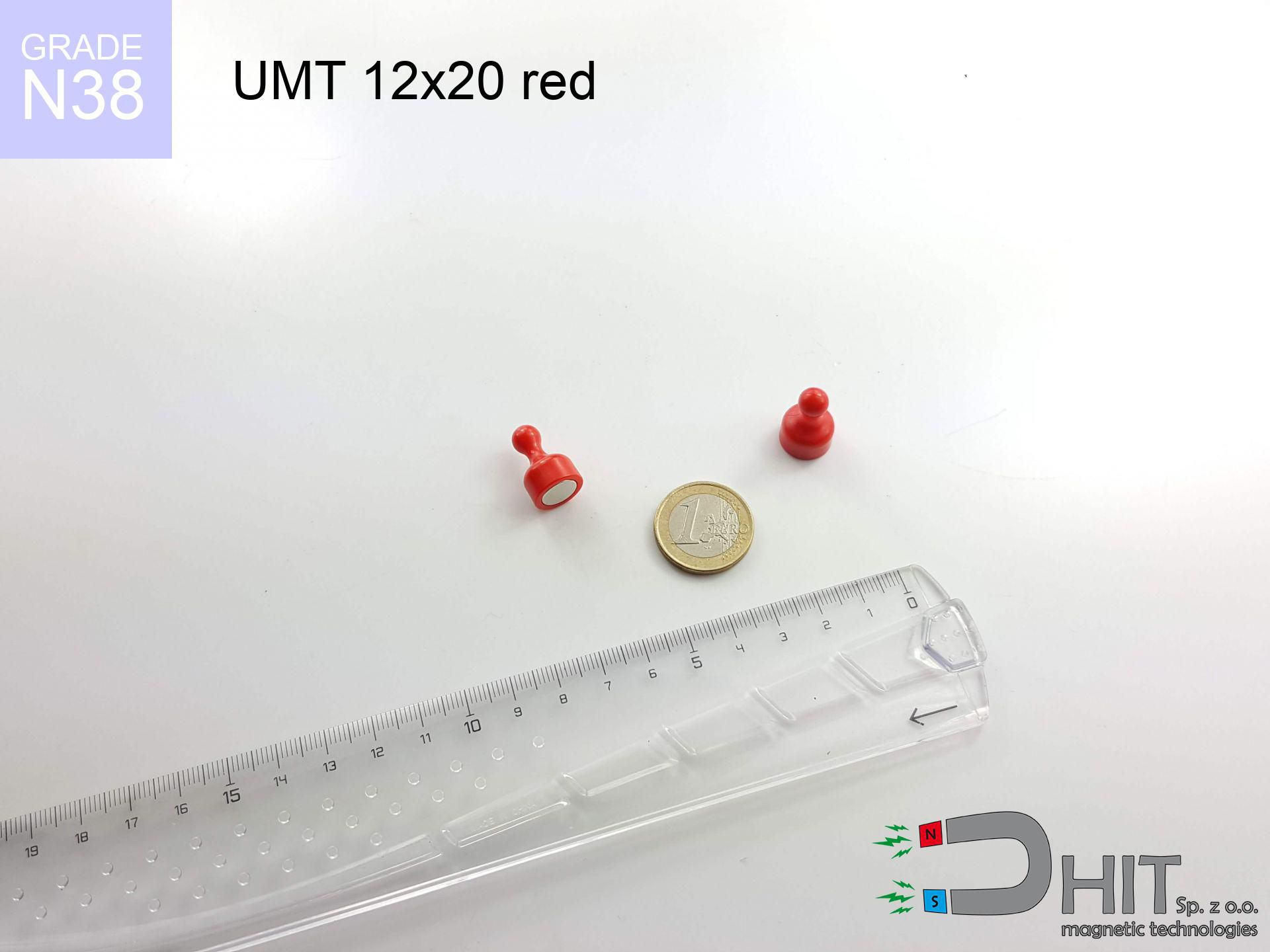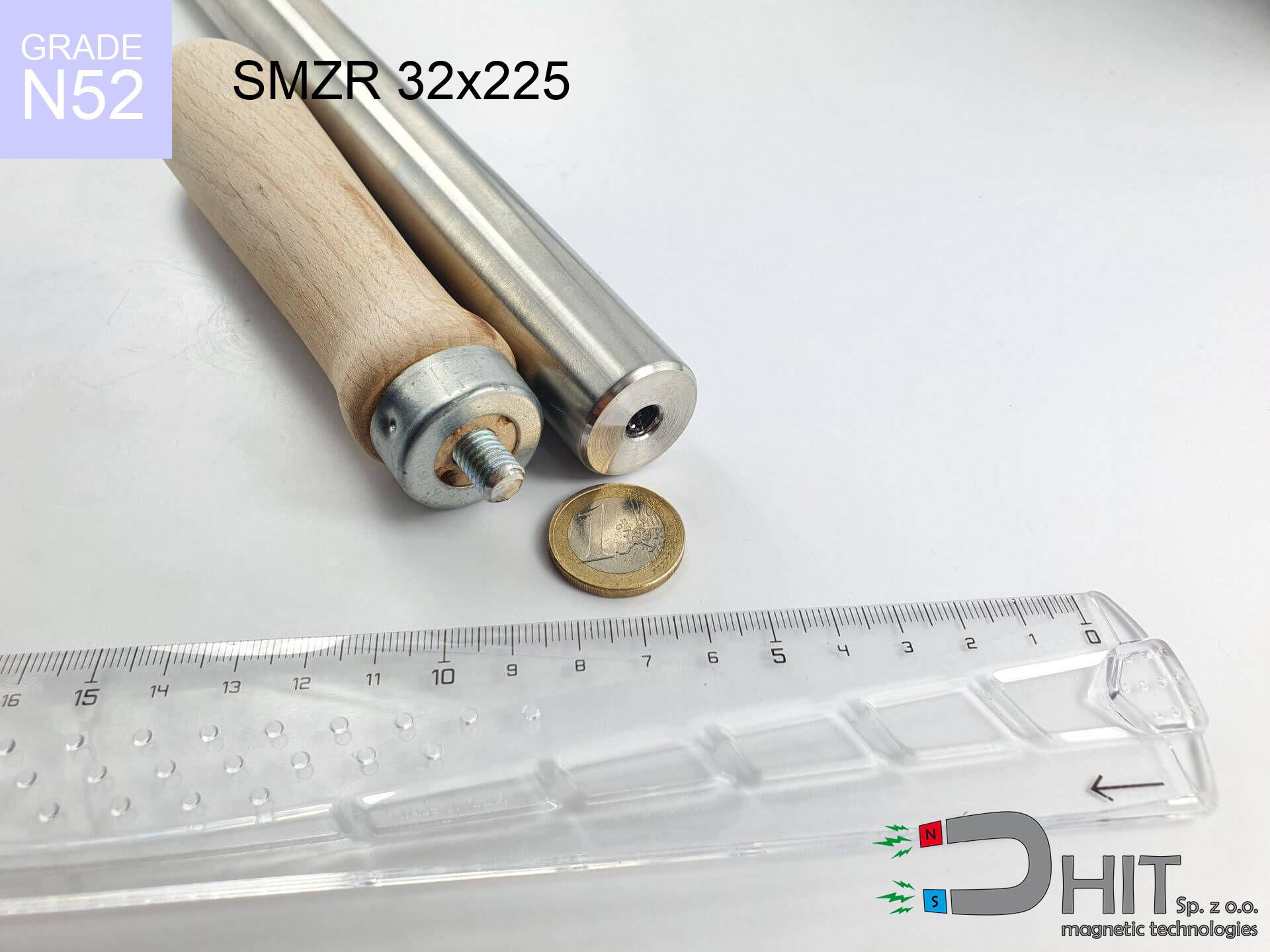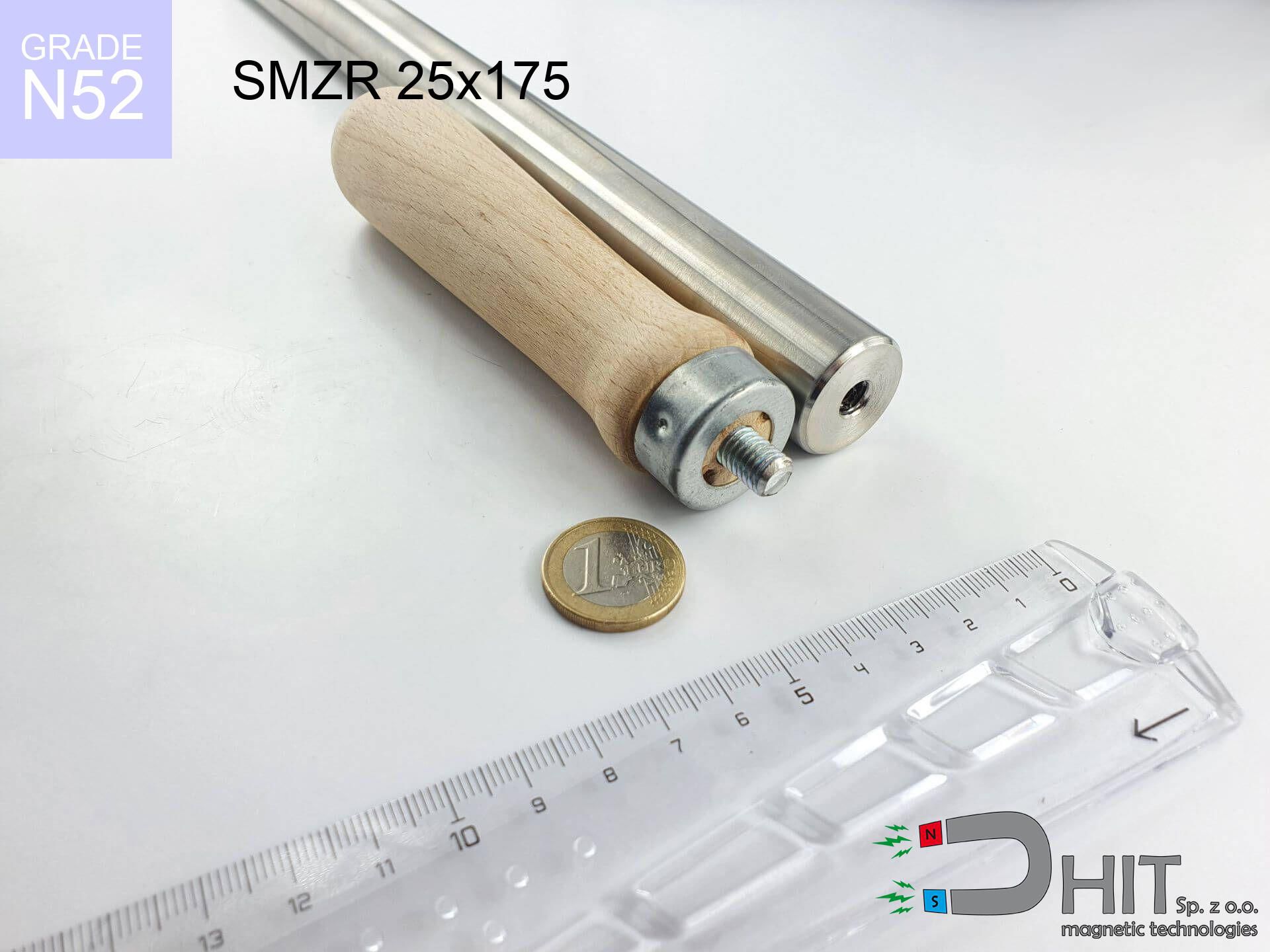UMT 12x20 red / N38 - board holder
board holder
Catalog no 230278
GTIN/EAN: 5906301814306
Diameter Ø
12 mm [±1 mm]
Height
20 mm [±1 mm]
Weight
3.5 g
Coating
[NiCuNi] Nickel
1.894 ZŁ with VAT / pcs + price for transport
1.540 ZŁ net + 23% VAT / pcs
bulk discounts:
Need more?Want to negotiate?
Call us
+48 22 499 98 98
or contact us using
request form
the contact section.
Weight along with form of a magnet can be analyzed on our
magnetic calculator.
Order by 14:00 and we’ll ship today!
UMT 12x20 red / N38 - board holder
Specification / characteristics UMT 12x20 red / N38 - board holder
| properties | values |
|---|---|
| Cat. no. | 230278 |
| GTIN/EAN | 5906301814306 |
| Production/Distribution | Dhit sp. z o.o. |
| Country of origin | Poland / China / Germany |
| Customs code | 85059029 |
| Diameter Ø | 12 mm [±1 mm] |
| Height | 20 mm [±1 mm] |
| Weight | 3.5 g |
| Coating | [NiCuNi] Nickel |
| Manufacturing Tolerance | ±1 mm |
Magnetic properties of material N38
| properties | values | units |
|---|---|---|
| remenance Br [min. - max.] ? | 12.2-12.6 | kGs |
| remenance Br [min. - max.] ? | 1220-1260 | mT |
| coercivity bHc ? | 10.8-11.5 | kOe |
| coercivity bHc ? | 860-915 | kA/m |
| actual internal force iHc | ≥ 12 | kOe |
| actual internal force iHc | ≥ 955 | kA/m |
| energy density [min. - max.] ? | 36-38 | BH max MGOe |
| energy density [min. - max.] ? | 287-303 | BH max KJ/m |
| max. temperature ? | ≤ 80 | °C |
Physical properties of sintered neodymium magnets Nd2Fe14B at 20°C
| properties | values | units |
|---|---|---|
| Vickers hardness | ≥550 | Hv |
| Density | ≥7.4 | g/cm3 |
| Curie Temperature TC | 312 - 380 | °C |
| Curie Temperature TF | 593 - 716 | °F |
| Specific resistance | 150 | μΩ⋅cm |
| Bending strength | 250 | MPa |
| Compressive strength | 1000~1100 | MPa |
| Thermal expansion parallel (∥) to orientation (M) | (3-4) x 10-6 | °C-1 |
| Thermal expansion perpendicular (⊥) to orientation (M) | -(1-3) x 10-6 | °C-1 |
| Young's modulus | 1.7 x 104 | kg/mm² |
Material specification
| iron (Fe) | 64% – 68% |
| neodymium (Nd) | 29% – 32% |
| boron (B) | 1.1% – 1.2% |
| dysprosium (Dy) | 0.5% – 2.0% |
| coating (Ni-Cu-Ni) | < 0.05% |
Environmental data
| recyclability (EoL) | 100% |
| recycled raw materials | ~10% (pre-cons) |
| carbon footprint | low / zredukowany |
| waste code (EWC) | 16 02 16 |
Check out also offers
Strengths as well as weaknesses of neodymium magnets.
Benefits
- They virtually do not lose power, because even after 10 years the performance loss is only ~1% (based on calculations),
- Neodymium magnets are characterized by extremely resistant to magnetic field loss caused by external field sources,
- By covering with a smooth coating of nickel, the element acquires an professional look,
- They feature high magnetic induction at the operating surface, making them more effective,
- Due to their durability and thermal resistance, neodymium magnets are capable of operate (depending on the form) even at high temperatures reaching 230°C or more...
- Possibility of precise modeling and adapting to specific requirements,
- Significant place in advanced technology sectors – they serve a role in data components, motor assemblies, medical devices, and modern systems.
- Compactness – despite small sizes they provide effective action, making them ideal for precision applications
Cons
- At strong impacts they can break, therefore we advise placing them in strong housings. A metal housing provides additional protection against damage, as well as increases the magnet's durability.
- NdFeB magnets lose power when exposed to high temperatures. After reaching 80°C, many of them experience permanent drop of power (a factor is the shape as well as dimensions of the magnet). We offer magnets specially adapted to work at temperatures up to 230°C marked [AH], which are extremely resistant to heat
- Magnets exposed to a humid environment can corrode. Therefore during using outdoors, we suggest using waterproof magnets made of rubber, plastic or other material resistant to moisture
- We suggest cover - magnetic mount, due to difficulties in realizing nuts inside the magnet and complicated shapes.
- Potential hazard related to microscopic parts of magnets pose a threat, when accidentally swallowed, which gains importance in the context of child health protection. Additionally, small components of these products are able to complicate diagnosis medical after entering the body.
- Higher cost of purchase is one of the disadvantages compared to ceramic magnets, especially in budget applications
Holding force characteristics
Maximum lifting capacity of the magnet – what contributes to it?
- on a plate made of structural steel, perfectly concentrating the magnetic field
- whose transverse dimension is min. 10 mm
- characterized by lack of roughness
- under conditions of gap-free contact (surface-to-surface)
- for force acting at a right angle (in the magnet axis)
- at standard ambient temperature
Key elements affecting lifting force
- Distance (betwixt the magnet and the metal), as even a microscopic distance (e.g. 0.5 mm) results in a reduction in force by up to 50% (this also applies to paint, rust or dirt).
- Force direction – remember that the magnet holds strongest perpendicularly. Under shear forces, the holding force drops significantly, often to levels of 20-30% of the maximum value.
- Wall thickness – the thinner the sheet, the weaker the hold. Part of the magnetic field penetrates through instead of converting into lifting capacity.
- Steel grade – the best choice is pure iron steel. Cast iron may generate lower lifting capacity.
- Surface finish – ideal contact is obtained only on smooth steel. Any scratches and bumps reduce the real contact area, reducing force.
- Temperature influence – high temperature weakens magnetic field. Exceeding the limit temperature can permanently damage the magnet.
Lifting capacity was determined by applying a steel plate with a smooth surface of suitable thickness (min. 20 mm), under perpendicular pulling force, whereas under parallel forces the load capacity is reduced by as much as 5 times. Moreover, even a small distance between the magnet and the plate lowers the lifting capacity.
Adults only
NdFeB magnets are not toys. Accidental ingestion of several magnets can lead to them attracting across intestines, which constitutes a severe health hazard and requires urgent medical intervention.
Health Danger
Life threat: Strong magnets can turn off pacemakers and defibrillators. Stay away if you have electronic implants.
Allergy Warning
Allergy Notice: The Ni-Cu-Ni coating consists of nickel. If redness appears, cease handling magnets and use protective gear.
Crushing force
Mind your fingers. Two powerful magnets will join instantly with a force of several hundred kilograms, destroying everything in their path. Be careful!
Keep away from electronics
Remember: neodymium magnets generate a field that confuses precision electronics. Keep a separation from your phone, tablet, and navigation systems.
Maximum temperature
Monitor thermal conditions. Heating the magnet to high heat will ruin its magnetic structure and pulling force.
Protect data
Do not bring magnets near a wallet, computer, or TV. The magnetism can destroy these devices and wipe information from cards.
Safe operation
Before use, read the rules. Uncontrolled attraction can break the magnet or hurt your hand. Be predictive.
Beware of splinters
Despite metallic appearance, neodymium is brittle and cannot withstand shocks. Avoid impacts, as the magnet may shatter into sharp, dangerous pieces.
Mechanical processing
Powder produced during grinding of magnets is self-igniting. Avoid drilling into magnets without proper cooling and knowledge.





![UMGZ 20x15x7 [M4] GZ / N38 - magnetic holder external thread UMGZ 20x15x7 [M4] GZ / N38 - magnetic holder external thread](https://cdn3.dhit.pl/graphics/products/um-20x15x7-m4-gz-vaf.jpg)


